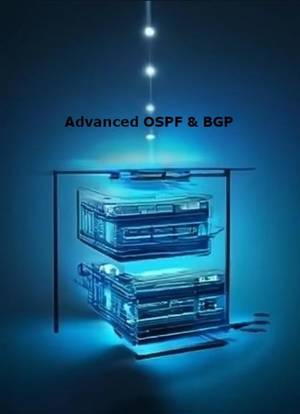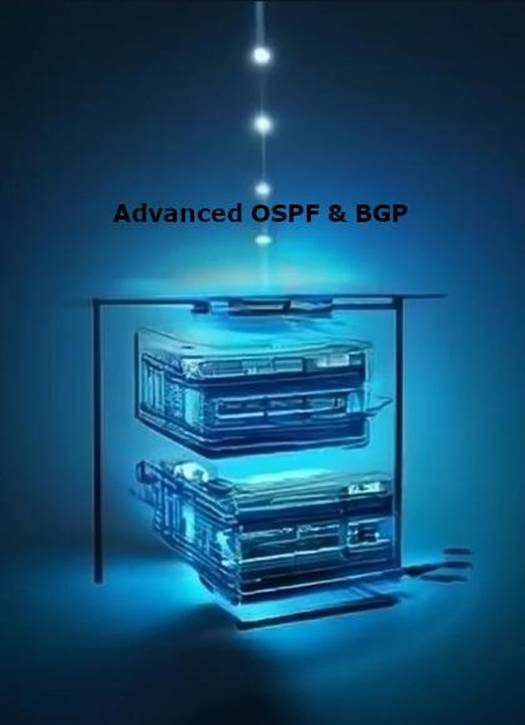
- Retrait gratuit dans votre magasin Club
- 7.000.000 titres dans notre catalogue
- Payer en toute sécurité
- Toujours un magasin près de chez vous
- Retrait gratuit dans votre magasin Club
- 7.000.000 titres dans notre catalogue
- Payer en toute sécurité
- Toujours un magasin près de chez vous
Description
Routing Basics and OSPF
Routing Basics
This track will cover the fundamental concepts of routing, including the role of routing protocols, the differences between static and dynamic routing, and the key components of a routing table. You will learn how routers make forwarding decisions and the importance of routing metrics in determining the best path.
OSPF
This section will provide an in-depth introduction to the Open Shortest Path First (OSPF) routing protocol. You will learn about the OSPF architecture, the different OSPF areas, and the OSPF neighbor and adjacency formation process. You will also explore specific OSPF concepts such as the Dijkstra algorithm, link-state advertisements (LSAs), and the OSPF designated router (DR) election.
Scaling OSPF
As networks grow in size and complexity, it becomes necessary to scale the OSPF protocol. This module will cover techniques for scaling OSPF, including the use of OSPF areas, virtual links, and route summarization. You will learn how to design and implement OSPF networks that can efficiently handle large-scale topologies.
OSPF Troubleshooting
Troubleshooting OSPF networks is a critical skill for network administrators. In this section, you will learn common OSPF troubleshooting techniques, such as analyzing OSPF neighbor relationships, interpreting OSPF debug output, and identifying and resolving OSPF routing issues.
Lab 1: OSPF
This hands-on lab will provide you with the opportunity to configure and troubleshoot OSPF in a simulated network environment. You will practice setting up OSPF, verifying the protocol's operation, and resolving common OSPF-related problems.
BGP Protocol and E-BGP
BGP Protocol
This track will introduce you to the Border Gateway Protocol (BGP), the de facto standard for inter-domain routing on the internet. You will learn about the BGP architecture, the different BGP message types, and the BGP decision process.
Policy Routing Mechanisms
BGP provides a rich set of policy routing mechanisms that allow network administrators to control the flow of traffic through their networks. In this section, you will explore various BGP policy tools, such as route maps, community attributes, and AS-path manipulation.
E-BGP Concepts
The focus will then shift to External BGP (E-BGP), which is used to exchange routing information between autonomous systems (ASes). You will learn about E-BGP peering, route advertisement, and the role of the BGP next-hop attribute.
E-BGP Troubleshooting
Troubleshooting E-BGP networks is essential for maintaining reliable inter-domain connectivity. This module will cover common E-BGP troubleshooting techniques, including analyzing BGP neighbor states, interpreting BGP debug output, and identifying and resolving E-BGP routing issues.
Lab 2: E-BGP
In this hands-on lab, you will configure and troubleshoot E-BGP in a simulated network environment. You will practice setting up E-BGP peering, verifying the protocol's operation, and resolving common E-BGP-related problems.
Review of Tracks 1-2 and I-BGP
Review of Concepts from Tracks 1-2
This section will provide a comprehensive review of the key concepts covered in the first two tracks, including routing basics, OSPF, and E-BGP.
I-BGP
The focus will then shift to Internal BGP (I-BGP), which is used to exchange routing information within an autonomous system. You will learn about the I-BGP architecture, the role of the I-BGP full mesh, and the concept of route reflection.
I-BGP Concepts
In this module, you will explore specific I-BGP concepts, such as the I-BGP decision process, the handling of IBGP-learned routes, and the use of the I-BGP next-hop attribute.
...and much more!
Thank you,
Ashlan
Spécifications
Parties prenantes
- Auteur(s) :
- Editeur:
Contenu
- Langue:
- Anglais
Caractéristiques
- EAN:
- 9798224952625
- Date de parution :
- 15-04-24
- Format:
- Ebook
- Protection digitale:
- /
- Format numérique:
- ePub







